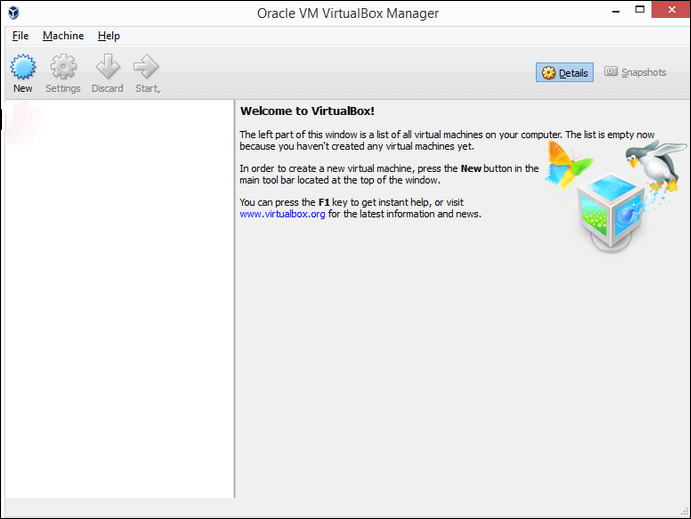
- ORACLE VIRTUALBOX SERVER 2016 HOW TO
- ORACLE VIRTUALBOX SERVER 2016 INSTALL
- ORACLE VIRTUALBOX SERVER 2016 FULL
- ORACLE VIRTUALBOX SERVER 2016 WINDOWS
ORACLE VIRTUALBOX SERVER 2016 INSTALL
To begin, execute the installer “ VirtualBox-6.1.6-137129-Win” with administrator privileges to install the Oracle VM Virtualbox 6.1.6 & Extension pack 6.1.6. Note: Before beginning the installation, make sure the host is connected to the Internet.
ORACLE VIRTUALBOX SERVER 2016 WINDOWS
In this How-to guide, we are providing step by step instructions with screenshots to explain the process of installing Oracle Virtualbox 6.1.6 on a Windows 2019 server & Oracle Virtualbox Extension pack 6.1.6 over it. Latest Oracle Virtualbox application downloaded from.Basic knowledge of hypervisor technology & Networking.A server machine with enough storage space and RAM.Disk image encryption with the AES algorithm.VirtualBox Remote Desktop Protocol (VRDP).Support for USB 2.0 and USB 3.0 devices.Oracle Cloud Infrastructure integration.The Extension pack adds the following functionality:


VirtualBox Extension Pack is an executable binary package intended to extend the functionality of VirtualBox. I've also made sure to configure the Windows boxes to use WinRM with the standard vagrant/vagrant username/password.What is the Oracle Virtualbox Extension pack? You can see the file that I've arbitrarily chosen is a private IP network of 192.168.2.0, and I have each box set with a different IP address. Please don't change it unless you know whatĬtl.vm.network "private_network",ip: "192.168.2.5" # configures the configuration version (we support older styles for # All Vagrant configuration is done below. To save you some time, here's the complete VagrantFile I'm working with. To do that, we'll have to nest this Ruby do loop inside another to get support for multiple Vagrant boxes. If so, we'll have to modify that a little bit to add support for multiple VMs. # Customize the amount of memory on the VM: # Display the VirtualBox GUI when booting the machine At this point, you've probably already got a VagrantFile created with, perhaps, a single VM that looks something like this: config.vm.provider "VirtualBox" do |vb| Now that I've selected each of the boxes I'll be bringing up, I'll need to add references to each of the boxes in my VagrantFile.Īssuming you've already got Vagrant and VirtualBox installed, next we need to get into your VagrantFile configuration file. I'll pick the latest Ubuntu box, a box from Matt Wrock with Windows Server 2012 R2 and a Windows Server 2016 TP5 box. I'll head on over to the public Vagrant box catalog and pick the three boxes I'd like to use.

ORACLE VIRTUALBOX SERVER 2016 FULL
VirtualBox is free, has full support with Vagrant, and there's already a lot of Vagrant boxes already created for VirtualBox. I'll be bringing up these VMs on Oracle's Virtualbox. Vagrant is not limited to three VMs, but my machine is! For this demonstration, I'm going to create an Ubuntu Linux server, a Windows Server 2012 R2, and a Windows Server 2016 VM.
ORACLE VIRTUALBOX SERVER 2016 HOW TO
Let's get into the logistics of how to use Vagrant to set up three VMs on your local machine. I've also personally used this to test Ansible managing Windows, which required a Linux and a Windows host. You'll learn how to test a high-availability situation, such as setting up load balancers, clusters, and the like. This article will be about taking your skills up a notch if you'd like to set up an entire environment.


 0 kommentar(er)
0 kommentar(er)
